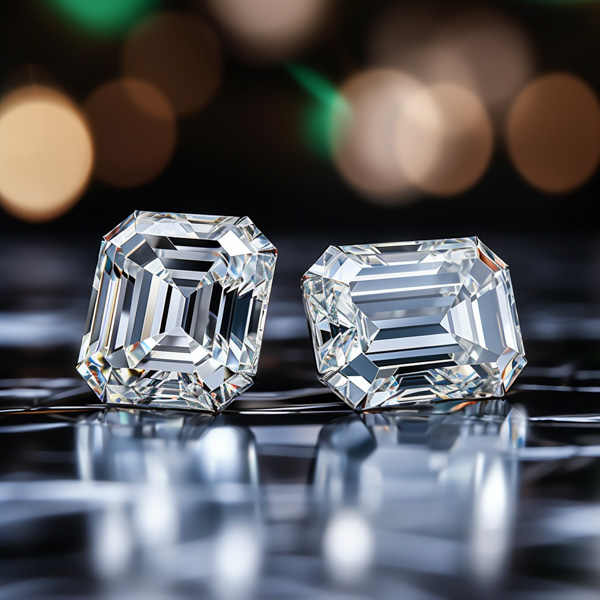The diamond industry has been going through a revolutionary change over the past few decades, with a growing emphasis on sustainability, ethical sourcing, and the innovative use of technology. One of the most exciting developments in the world of gems is the lab grown diamonds insider story. These man-made diamonds are transforming the way people view diamonds, both from a scientific and a consumer perspective. In this insider’s story, we’ll explore how lab-grown diamonds are made, their growing popularity, and how they are challenging the traditional diamond industry.
What are Lab-Grown Diamonds?
Lab-grown diamonds, often referred to as man-made diamonds, are diamonds that are created in a laboratory environment, simulating the natural processes that occur deep within the Earth. While these diamonds are not mined from the Earth, they possess the same physical, chemical, and optical properties as natural diamonds. The difference lies in their creation process. Man-made diamonds are produced using two main methods: High Pressure High Temperature (HPHT) and Chemical Vapor Deposition (CVD). Both processes replicate the conditions found in nature, leading to diamonds that are identical to those formed naturally over millions of years.
The Rise of Lab-Grown Diamonds in the Market
The market for lab-grown diamonds has grown significantly in recent years, driven by consumer interest in ethical, affordable, and sustainable options. As consumers become more aware of the environmental and social impact of mining, the demand for man-made diamonds has surged. Lab-grown diamonds are often seen as a more responsible choice, as their production has a lower environmental impact compared to traditional diamond mining. This trend has prompted several established jewelry brands to introduce man made diamonds into their collections, further normalizing their presence in the market.
Benefits of Lab-Grown Diamonds
There are several key benefits to purchasing a lab-grown diamond over a natural diamond. First and foremost, man-made diamonds are typically more affordable. Since they are created in a controlled laboratory environment, the costs associated with mining, such as labor, environmental degradation, and transportation, are eliminated. As a result, consumers can purchase larger or higher-quality diamonds for the same price as a smaller, lower-quality natural diamond. Additionally, lab-grown diamonds are free from the ethical concerns that often accompany mined diamonds. Buyers can rest assured that their man-made diamonds were produced without exploiting workers or contributing to conflict financing.
The Science Behind Lab-Grown Diamonds
The creation of lab-grown diamonds is a fascinating process that blends science and technology. In the HPHT method, carbon is subjected to extreme pressure and temperature to mimic the natural conditions under which diamonds are formed. In the CVD method, a carbon-rich gas is heated, causing the carbon atoms to settle on a substrate and slowly build up layers that eventually form a diamond. Both processes result in diamonds that are identical to natural ones in every way, from their appearance to their durability. This scientific breakthrough is one of the main reasons man-made diamonds are becoming a popular alternative to traditional diamonds.
Why Consumers Are Choosing Lab-Grown Diamonds
In addition to the affordability and ethical considerations, consumers are increasingly choosing lab-grown diamonds because they offer a more transparent buying experience. With traditional diamonds, there can be a lack of clarity about the sourcing and journey of the stone. On the other hand, man-made diamonds come with a clear and verifiable production story. This transparency helps buyers feel more confident in their purchase and aligns with the growing consumer demand for traceability in all products, especially luxury goods like diamonds.
Moreover, many buyers are drawn to the environmental benefits of choosing a lab-grown diamond. Traditional diamond mining is known for its environmental destruction, including deforestation, soil erosion, and the depletion of natural resources. By opting for man-made diamonds, consumers can contribute to reducing the negative impact of mining, as lab-grown diamonds have a significantly smaller carbon footprint.
The Future of Lab-Grown Diamonds
The future of lab-grown diamonds looks bright, with continued advancements in technology and growing acceptance among both consumers and jewelers. As the production process becomes more refined, man-made diamonds are likely to become even more affordable and accessible to a broader audience. In fact, it is possible that one day, lab-grown diamonds could become the dominant form of diamond in the market, surpassing natural diamonds in both popularity and production volume.
For those in the jewelry industry, the growing demand for man-made diamonds represents an opportunity to diversify offerings and cater to a more conscious, environmentally aware consumer base. As the stigma around lab-grown diamonds continues to fade, it is likely that more people will choose them over their mined counterparts, not only for their ethical and environmental benefits but also for their beauty and quality.
Conclusion: A New Era in the Diamond Industry
The rise of lab-grown diamonds marks the beginning of a new era in the diamond industry. These man-made diamonds are reshaping the way we think about diamonds, offering a sustainable, ethical, and affordable alternative to traditional mined diamonds. As consumer demand for more responsible options grows, lab-grown diamonds will continue to play a pivotal role in the future of the jewelry industry. This insider’s story reveals that the future of diamonds is no longer rooted in the depths of the Earth but in the innovation of modern technology, offering a brilliant future for all.
